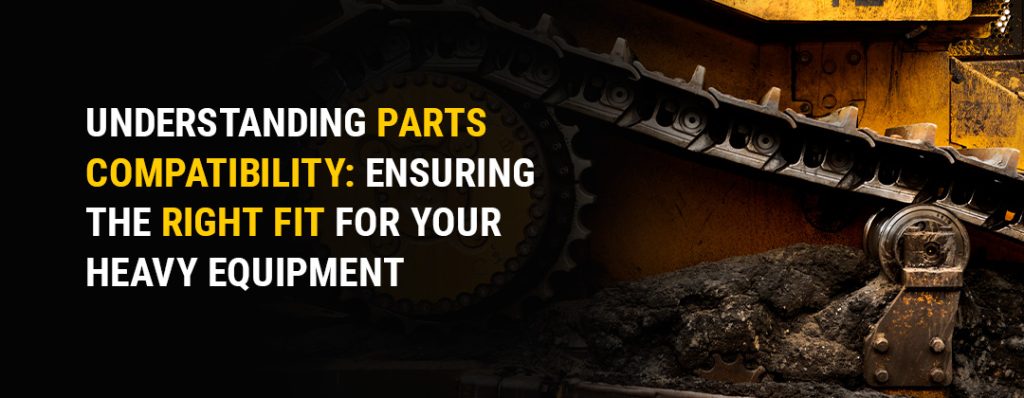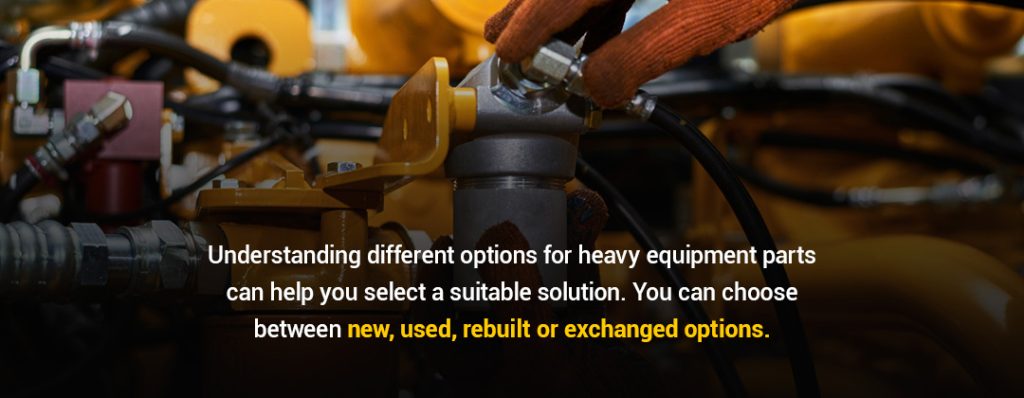
Your heavy equipment has complex inner workings, and each part must work together to provide the best results. When you replace a part, ensuring the right fit is essential for proper functionality. Compatible replacements can help support, improve and maintain your equipment.
Gregory Poole can help you select a compatible fit for your heavy equipment replacement parts.
When you work with heavy equipment, parts replacements are inevitable. When the time comes, you’ll need to select high-quality and compatible parts. Selecting suitable parts can enhance your equipment’s appearance, performance and life span. Heavy equipment parts can vary in quality, price and aesthetics. Here are some factors to consider when picking compatible replacement parts for your heavy machinery.
Some parts are of higher quality than others. High-quality replacement parts can last longer and offer better performance and functionality. The quality of a replacement part can depend on its condition if used, the brand’s reputability and any manufacturing testing standards it underwent.
When shopping for new parts, consider their purpose and how long you’ll need them. Do you need something that will last for years, or is the part only going to be in service for a few weeks until you get a new machine? If you need the part to be functional for a long time, you may be better off with a new or custom piece. When a replacement part is used as you wait for a new machine, a used part may work well for your needs.
Some replacement parts will match your equipment better than others. Consider how a replacement part fits your equipment’s quality and appearance. Is it the same color? Does it fit securely? Are all part components equal? Will some components wear more quickly than others?
Replacement parts can impact a piece of equipment’s overall performance. The original parts were built specifically for the machine, so you need to be careful when purchasing replacements. Purchasing an exact match can offer the same functionality as the original part. Parts that do not perform to the same level may compromise your equipment.
Some equipment replacement parts have extended warranties. Consider how long you’ll use the part. An extended warranty can come in handy if you need to use the replacement part for a long time.
Your budget can determine your replacement. Consider quality, longevity, appearance and reliability, and select a solution that matches your expectations and budget. You can still get high-quality parts while on a strict budget when you work with the right supplier.

Understanding different options for heavy equipment parts can help you select a suitable solution. You can choose between new, used, rebuilt or exchanged options.
Buying new parts gives you the same quality, look and performance as your original part. New components can also offer convenience. Parts are made specifically for your equipment — all you need to do is unpack and install them.
New heavy equipment parts can have a more extended warranty than used parts, giving you peace of mind that you can replace or repair your parts cost-free. Buying new parts can also limit wait time. You can shop a wide selection of parts and get what you need quickly.
Used or pre-owned parts can maintain your equipment’s quality and functionality. Some owners or manufacturers fit new parts on older equipment. Then, when they retire the equipment, they remove the working parts and resell them. Depending on when the parts were installed, they can be in excellent condition with minimal wear.
Used parts can have similar quality and performance as new options. They can also be cost-effective and long-lasting. However, they may have limited warranties and shorter life spans than new parts.
Manufacturers reconstruct old parts with new materials to revitalize their quality and appearance. They remanufacture parts to match factory standards and specs. Like new parts, rebuilt solutions come straight out of the box with a warranty. Rebuilt parts can be less costly than new parts and offer high-quality performance.
The most significant drawback with rebuilt parts is uniformity. While the parts can match your equipment, part components can differ. Older components can have more wear, which affects the part life span. It can also take longer to remanufacture parts, so you may wait a while before you get your parts.
You can swap your old part for remanufactured in-store parts. Manufacturers repair and rebuild components like fan drives and pump drives. They also test and inspect them to ensure they match factory quality standards. You can exchange parts at an equipment store and get a seemingly new one packaged and ready. Exchanged equipment components are one of the most budget-friendly options without compromising quality and performance.
You’ll also need to decide between original and generic parts.
Original equipment manufacturer (OEM) parts can guarantee brand quality. You can have peace of mind that your part is made with manufacturer standards and quality assurance. Whether you purchase new, used, rebuilt or exchanged parts, you get them from a reputable and reliable source. You can find pieces that fit your machine, requirements and expectations. You’re also covered for part replacement with a warranty, saving time and money.
Generic or non-OEM parts come from alternative sources. While generic parts can mimic the original manufacturer’s design, they’re not the same. Using generic parts can impact your equipment’s performance and appearance. Generic parts do not undergo the same testing or have to meet the same quality standards, making them less appealing.
You can also forfeit your equipment warranty with generic products. Original manufacturers offer services and repairs on their equipment. When you install a generic part, it is no longer original, which means manufacturers cannot service your equipment. You can also compromise your equipment functionality when you use parts without appropriate testing and inspections.
Some parts require more durable replacement options to maintain their performance and life span. Understanding different part requirements can help you pick compatible and suitable replacements. Here are some parts you’ll need to replace periodically:
Gregory Poole Equipment Company offers new, used and remanufactured parts for Cat® machines. You can shop for parts online, or our trusted team can help you find the best solution for your budget and preferences. Contact us with any questions about our selection of heavy equipment parts!